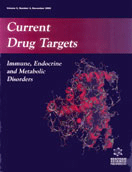Abstract
Activins and inhibins were first identified by virtue of their ability to regulate follicle-stimulating hormone (FSH) secretion from the anterior pituitary. Activins are also powerful regulators of gonadal functions. However, the physiological functions of activins are not restricted to reproductive tissues. Activins are involved in apoptosis of hepatocytes and B cells, fibrosis, inflammation and neurogenesis. Activins are regarded as novel drug targets since blocking activins would provide benefits by preventing apoptosis, fibrosis, inflammation and growth of several cancers. Activins are members of the transforming growth factor-β (TGF-β) family, which has numerous peptide growth and differentiation factors including activins, bone morphogenetic proteins (BMPs), growth and differentiation factors (GDFs) and TGF-βs. Among them, GDF8 is also known as myostatin and is structurally related to activins. Myostatin is specifically expressed in the skeletal muscle lineage and is a candidate for muscle chalone negatively regulating the growth of myoblasts. Myostatin is regarded as a good drug target since therapeutics that modulate skeletal muscle growth would be useful for disease conditions such as muscular dystrophy, sarcopenia, cachexia and even diabetes. Recent studies have revealed that activins and myostatin signal through activin type II receptors (ActRIIA and ActRIIB) and their activities are regulated by extracellular binding proteins, follistatins and follistatin-related gene (FLRG). Furthermore, signaling of activins, myostatin and related ligands is also controlled by intracellular receptor-interacting proteins by novel mechanisms. In this review, I would like to show the current progress in the field emphasizing the importance of activins and myostatin as novel drug targets for immune, endocrine and metabolic disorders.
Keywords: activin, myostatin, follistatin, flrg, fibrosis, tumorigenesis, muscular dystrophy, diabetes
 3
3


















